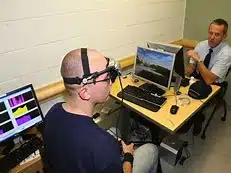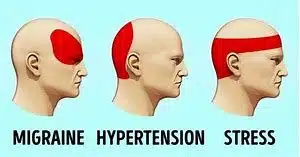Migraines

Migraines can be described as splitting headaches but also include other debilitating symptoms such as
- blurry vision
- depression and anxiety symptoms
- sleep disturbances
- chronic pain
- fatigue.
The autonomic nervous system- the involuntary nervous system- acts unconsciously and responds to stressful situations. When people experience migraines, their body is responding to stress in an unhealthy manner and it can be difficult to modify this reaction.
Neurofeedback for Migraines
One alternative treatment option for migraines is to use neurofeedback to prevent the onset of migraines. Neurofeedback has been commonly used to treat ADHD and other disorders that involve an imbalance of activity in the brain.
Research studies have also supported this evidence in favor of neurofeedback’s ability to reduce the severity and frequency of migraines. In a recent study, people who experienced severe migraine headaches underwent EEG neurofeedback while a control group took medication for their migraines. Of the seventy participants who underwent neurofeedback, over half of them completely stopped experiencing migraines.
Essentially all participants who underwent neurofeedback experienced a reduction in migraines and headaches. Majority of the patients who took drugs for their migraines (68%) did not experience any relief from their migraines or pain
Why does neurofeedback work?
When someone is having a migraine, his or her brain is experiencing stress and an inability to focus. During migraines, the sympathetic nervous system activity is increased while the parasympathetic nervous system is decreased.
The sympathetic nervous system is what prepares our body for activity and for the “fight or flight” response while the parasympathetic nervous system relaxes and slows down our body. These responses to stress are involuntary which is why it can be so hard to prevent migraines (which are caused by stress and strain).
Essentially, there is an imbalance of activity occurring and the goal of neurofeedback is to create a healthy pattern to get rid of the migraines. EEG neurofeedback sessions “trains” the brain to respond better to stress and produce normal brain wave activity.
What happens in a neurofeedback session?
Neurofeedback sessions work to monitor the bodily responses to stress. During a neurofeedback session (20-30 minutes), sensors are attached to peoples’ scalps as an EEG collects information and their brain wave activity is recorded and processed on a computer. Through this EEG machine, the central nervous system activity is monitored.
In these sessions, participants were playing a video game or watching a video. When their brain was producing “appropriate” activity, they were rewarded with points in the video game or a clearer display in the video. However, with unwanted activity, they would be “punished” with losing points or having the video freeze.
An alternative solution to Medication
Many people who experience migraines are dealing with chronic stress and pain. Their brain, in its current state, is unable to regulate itself and manage this stress.
Neurofeedback works to train their brain to properly regulate itself and produce health brain wave activity :)If you are suffering from migraines, you do not need to continue living with this pain– Try a biofeedback session today!


